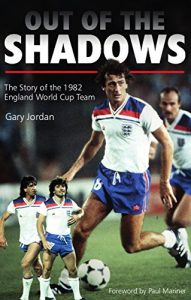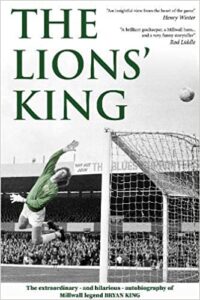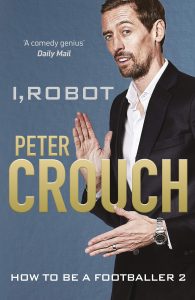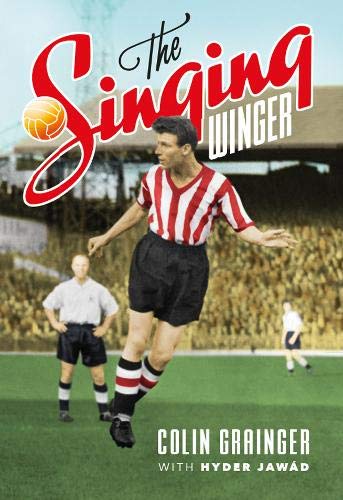 For many football fans in England, the 1982 World Cup in Spain is simply remembered for the fact the Three Lions were eliminated from the tournament despite not losing a game: a footnote, nothing more than a pub quiz question. However, there is so much more to this oft repeated simplistic one-line memory of England at the 12th Copa del Mundo Finals.
For many football fans in England, the 1982 World Cup in Spain is simply remembered for the fact the Three Lions were eliminated from the tournament despite not losing a game: a footnote, nothing more than a pub quiz question. However, there is so much more to this oft repeated simplistic one-line memory of England at the 12th Copa del Mundo Finals.
Author Gary Jordan, could have simply gone down the route of writing about the games that Ron Greenwood’s squad took part in during that summer of 1982, but has instead provided a well-researched and in-depth look at providing a story that leads all the way back to the 1970 World Cup Finals in Mexico. By taking the reader back to that Quarter-Final tie when as World Cup holders England surrended a two-goal lead to West Germany, Jordan pinpoints the start of a period in the international football wilderness for the English National team. Jordan continues in the opening chapter his exploration of England’s fall from grace with the detailing of the infamous 1-1 draw at Wembley against Poland, which effectively sealed Sir Alf Ramsey’s fate, as England failed to qualify for the 1974 Finals in West Germany, and the Don Revie era, tainted by his defection to the United Arab Emirates, with England once again missing out on World Cup qualification, this time to Argentina in 1978.
With Revie gone, Ron Greenwood takes the reigns in 1977 with the aim of ensuring qualification for the 1980 European Championship Finals in Italy and the 1982 World Cup Finals in Spain and in doing so, hopefully restore some pride in the Three Lions. This mission for the ex-West Ham United supremo then is explored by Jordan, who skilfully details the changing face of the playing squad as it navigates qualification for the 1980 Campionato Europeo di Calcio in Italy. England qualified for the Finals, after going unbeaten in a group which contained, Bulgaria, Denmark, Northern Ireland, and Republic of Ireland and travelled to Italy with high expectations. However, against a backdrop of English hooliganism on the terraces and dull defensive football on the pitch, England missed out on progression to the knock-out phase, after a draw with eventual runners-up Belgium, a 1-0 loss to hosts Italy and a 2-1 win over Spain.
However, Greenwood now had the task of ensuring qualification for a World Cup for the first time in 12 years and with a draw that saw England in a group with Hungary, Norway, Romania and Switzerland, the English Press were planning their Spanish sojourn even before a ball had been kicked, given what they perceived was an easy group. Younger England fans familiar only with the ease of qualification that Gareth Southgate’s team have enjoyed for the 2018 World Cup and 2021 European Finals, will find the chapters in this book detailing the group games during 1980 and 1981, bordering on the unbelievable, as Jordan describes England stumbling over the finishing line to reach Espana ’82, including at one point the intended resignation by Greenwood and the lows of the losses (all on the road and all by the same score-line 2-1) to Romania, Switzerland and Norway.
However, with qualification achieved, the book turns its attention to the preparation for the tournament and almost has a real-time feel to it as the provisional 40-man squad is whittled down to the final 22 and the last friendlies are played, before the actual tournament itself. Jordan continues though to provide some great insights into the issues in and around the camp during the tournament, with England playing against the backdrop of the Falklands War, concerns about the behaviour of English supporters and the injury struggles of England’s key-players, Kevin Keegan, and Trevor Brooking. History tells us that the Three Lions finished top of their group after wins against France, Czechoslovakia, and Kuwait and went into the second group-stage with hosts Spain and West Germany, where only the winners would progress to the Semi-Finals. England drew 0-0 with the Germans and went into the Spain game knowing that they had to win to have any chance of progressing. With a third of the game remaining and the score 0-0, Greenwood threw on Keegan and Brooking in the hope of pulling off a miracle. It wasn’t to be, but as every good pub-quizzer knows England bowed out undefeated and Greenwood having done what he set out to achieve, made way for Bobby Robson.
There is a useful statistic section included which details the qualifications for the 1982 Finals and the games in Spain itself. A nice touch is the biographies of the 18 players who made the provisional squad, but were cut from the final 22, some never to get near an England Cap or indeed an England squad ever again.
This book just is not just about a largely ignored time in England’s footballing past but tells the tale of football as a whole from a different era, whether this be the coverage it now receives, the preparation squads now have or the globalisation of the sport. As an example looking at the number of teams participating in major competitions then and now shows the growth in just under forty-years. In Italy for the 1980 European Championship Finals, there were just 8 teams in a tournament which lasted only 11 days, the now rescheduled 2021 equivalent, will see 24 teams contest the title over the period of a month. The World Cup too has seen not only the format change, but as with the European Finals a rise in the numbers qualifying for the showpiece event. Spain 1982 saw a 24 team tournament, whist Qatar in 2022, will see 32 countries take part and talk from FIFA of further expansion in future.
Jordan does in this book indeed bring the England team of this era, Out of the Shadows, in an honest reflection of the work manager Ron Greenwood did in a difficult period for the National team. A book for those who remember that time and for younger readers to appreciate the history of the Three Lions.
(Pitch Publishing Ltd. October 2017. Paperback 320pp)
 During the 1960s, ‘70s and ‘80s England was particularly blessed with an array of goalkeeping talent, from the World Cup winning Gordon Banks, through to Ray Clemence and Peter Shilton. However, there was a dearth of other talented players who could also have pulled on (and did in some cases) the Three Lions shirt during that time, with the likes of Peter Bonetti, Joe Corrigan, Jim Montgomery, Phil Parkes, Jimmy Rimmer, Alex Stepney and Gordon West all highly regarded First Division ‘keepers. Given that, it is all the more remarkable that Bryan King, who whilst playing his trade at Second Division Millwall, also forced his way into the England set-up during the early 1970s.
During the 1960s, ‘70s and ‘80s England was particularly blessed with an array of goalkeeping talent, from the World Cup winning Gordon Banks, through to Ray Clemence and Peter Shilton. However, there was a dearth of other talented players who could also have pulled on (and did in some cases) the Three Lions shirt during that time, with the likes of Peter Bonetti, Joe Corrigan, Jim Montgomery, Phil Parkes, Jimmy Rimmer, Alex Stepney and Gordon West all highly regarded First Division ‘keepers. Given that, it is all the more remarkable that Bryan King, who whilst playing his trade at Second Division Millwall, also forced his way into the England set-up during the early 1970s.


 For many football fans in England, the 1982 World Cup in Spain is simply remembered for the fact the Three Lions were eliminated from the tournament despite not losing a game: a footnote, nothing more than a pub quiz question. However, there is so much more to this oft repeated simplistic one-line memory of England at the 12th Copa del Mundo Finals.
For many football fans in England, the 1982 World Cup in Spain is simply remembered for the fact the Three Lions were eliminated from the tournament despite not losing a game: a footnote, nothing more than a pub quiz question. However, there is so much more to this oft repeated simplistic one-line memory of England at the 12th Copa del Mundo Finals. A career in football is hard enough to achieve on your own, but when you are from a football family, then the pressure must be immense. For Clive Allen, that must have been monumental, with his father, Les, part of the Tottenham Hotspur’s team that did the ‘double’ in winning the First Division title and FA Cup in 1960/61, and a younger brother, Bradley and two cousins, Martin and Paul, who also went on to have professional careers in the game.
A career in football is hard enough to achieve on your own, but when you are from a football family, then the pressure must be immense. For Clive Allen, that must have been monumental, with his father, Les, part of the Tottenham Hotspur’s team that did the ‘double’ in winning the First Division title and FA Cup in 1960/61, and a younger brother, Bradley and two cousins, Martin and Paul, who also went on to have professional careers in the game.




